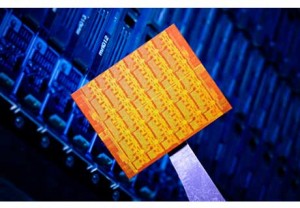 Intel plans to end the Processor Rat race, atleast for few months, by unveiling it’s latest Processor architecture: Nehalem-EX server. Last year, Intel had announced the new Nehalem — A 8-core processor.
Intel plans to end the Processor Rat race, atleast for few months, by unveiling it’s latest Processor architecture: Nehalem-EX server. Last year, Intel had announced the new Nehalem — A 8-core processor.
The processor will be targeted at four-socket servers with each physical core will run two threads simultaneously, giving the chip 64 virtual processing cores on servers and can even go upto 128. (but if this is good old Intel Hyperthreading (HT), it ain’t as good as anticipated).
Nehalem-EX is Intel’s fastest processor to date, however, clock speeds are still mystery but the company has said it will include 24MB of cache, and 2.3 billion transistors. The new processor will be targetted for high-end servers especially to Cloud computing farms and one of the first implementers would be IBM.
Nehalem architecture overcomes the limitations older Intel chips had: integrates the memory controller and improves system speed by cutting data bottlenecks. Apart from that, the new architecture have some advanced Error-recovery mechanisms like MCA As far as the fabrication is concerned, it would use 45-nanometer process, however, 32nm is very much work-in-progress.
Advanced Error Recovery: Intel is also including new technologies like Machine Check Architecture (MCA) recoveryerror correction that could make servers more fault tolerant and provide greater uptime. This added capability is brand new to the Nehalem product family and will help businesses lower their total cost of ownership. With MCA Recovery, errors can be isolated on a virtual machine and the other machines can still run uninterrupted while that one is being restarted. The processor will be able to detect system errors originating in the CPU or system memory and correct them by working with the operating system.
Apart of these error recovery were seen on Intel’s Itanium processors, which are totally different architecture.
Buffered Memory Chips: The new processor will also contain separate buffered memory chips that can store data temporarily alongside the main memory for faster task execution. No this is not L2 or L3 cache but something different.
Advanced Memory channelling: Intel will also offer four memory channels per processor, simply said more channels provide more memory bandwidth to run programs faster. AMD‘s 12-core Opteron server processors also offer same memory channels. But, Intel will build large amounts of cache inside Nehalem-EX that could help the processor deliver faster performance, but AMD‘s Magny Cours beats Nehalem-EX when it comes to more physical cores per chip.
Intel claims that Nehalem-EX will give a serious challenge to AMD’s Magny cours, but the results have to been before being commented on.
Intel claims, “The results could vary depending on the type of task assigned, but performance is just one part of the story. Nehalem-EX could reach out to new markets with additional features like fault-tolerance. It could tread into territory of high-end servers dominated by Intel’s Itanium and chips based on RISC (reduced instruction set computer) architecture, which includes IBM’s Power and Sun’s Sparc processors.”
- Scalability up to eight sockets via Quick Path Interconnects and greater with third-party node controllers
- QuickPath Architecture with four high-bandwidth links
- 24MB of shared cache
- Integrated memory controllers
- Intel Turbo Boost Technology
- Intel scalable memory buffer and scalable memory interconnects
- Up to 9x the memory bandwidth of previous generation
- Support for up to 16 memory slots per processor socket
Here’s the video from last year’s Intel’s channel talking about the Processor:
The 32nm horizon:
loading...
loading...

Damn, you need to improve your spelling and grammar. Too many mistakes to list.
loading...
loading...